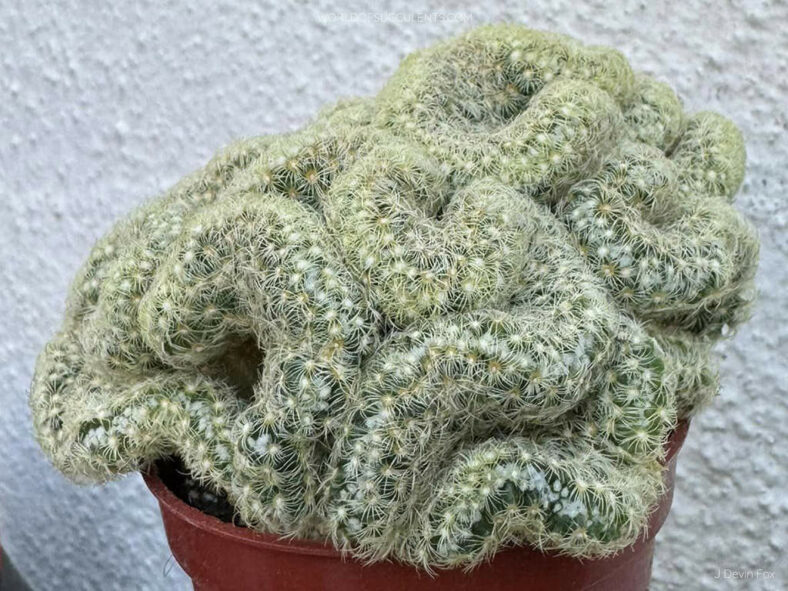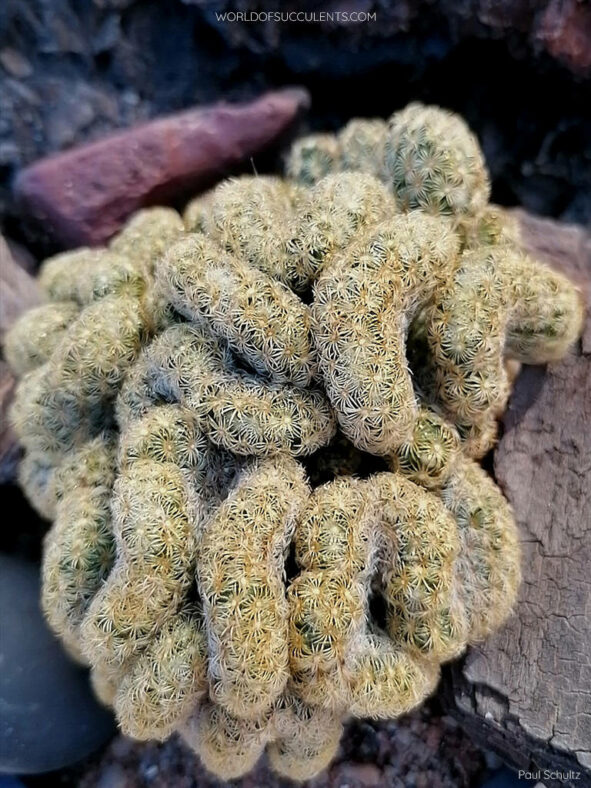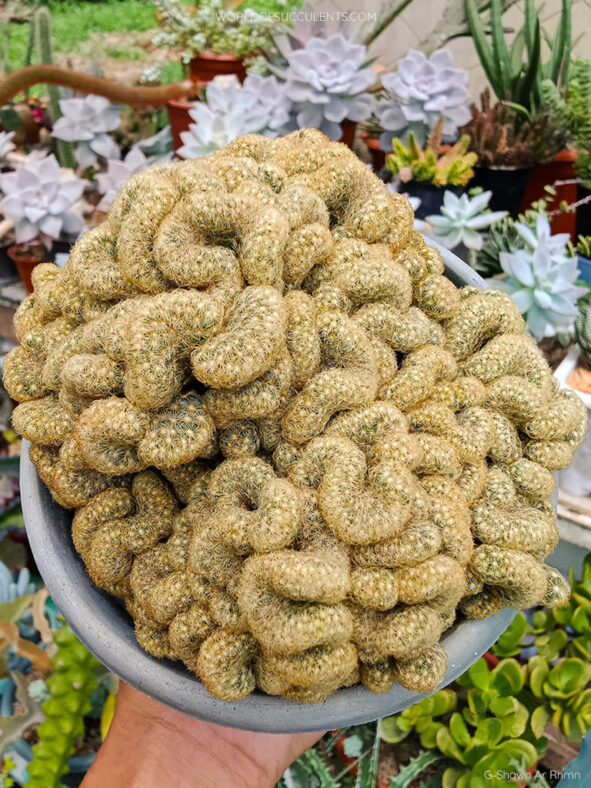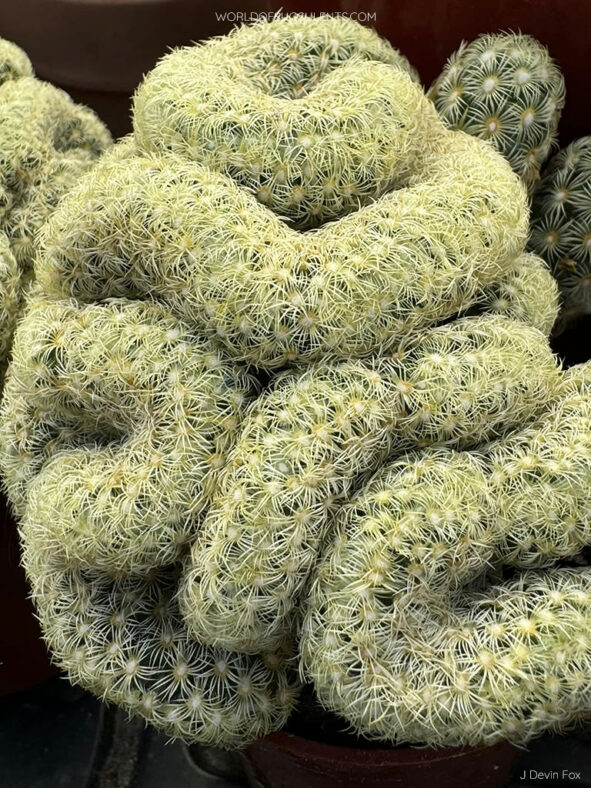Mammillaria elongata f. cristata is a small, unusual cactus resembling a living sculpture.
Scientific Name
Mammillaria elongata f. cristata
Accepted Scientific Name
Mammillaria elongata DC.
Scientific Classification
Family: Cactaceae
Subfamily: Cactoideae
Tribe: Cacteae
Subtribe: Cactinae
Genus: Mammillaria
Origin
Mammillaria elongata f. cristata is a crested form of Mammillaria elongata. While typically selected in cultivation, specimens with crested stems can also be found in the species' natural habitat in central Mexico.
Description
Mammillaria elongata f. cristata is a strange small cactus that forms a densely packed cluster of contorted green stems with wooly areoles that bear white to yellow or copper spines. Each specimen has a unique shape and often can display both mutated and normal growth.
In spring, funnel-shaped flowers typically appear only on the normal growing stems. The flowers vary from whitish to pale yellow or pinkish and may sometimes be flushed pink or have a darker midstripe.

How to Grow and Care for Mammillaria elongata f. cristata
Light: For optimal growth of your Mammillaria elongata f. cristata, ensure it is planted in an area that receives at least four hours of direct sunlight daily. If growing indoors, placing the cactus near a bright window is best to ensure it gets enough light. It is advisable to keep it on the balcony or in the garden from spring to fall for additional light.
Soil: To ensure good root aeration and drainage, use commercial cactus soil or create your own well-draining soil mix.
Temperature: Mammillaria elongata f. cristata is heat-tolerant but is not a cold-hardy plant. It grows best in USDA Plant Hardiness Zones 9b to 11b, with average minimum winter temperatures ranging from 25 to 50 °F (-3.9 to 10 °C).
Watering: Water deeply from spring to fall, and wait until the soil dries out before watering again. Never let your pot sit in water, and suspend watering when the plant goes dormant in the winter.
Fertilizing: Mammillaria elongata f. cristata benefits from fertilizing during the growing season. Apply a water-soluble fertilizer for cacti and other succulents. Suspend feeding during the winter when the plant goes dormant.
Repotting: Repot the cactus every two or three years into a slightly larger pot, preferably during late winter or early spring. However, repotting can be done at any time of the year.
Propagation: Mammillaria elongata f. cristata can be easily propagated by stem cuttings during the growing season.
Learn more at How to Grow and Care for Mammillaria.
Toxicity of Mammillaria elongata f. cristata
Mammillaria elongata f. cristata is non-toxic but has sharp spines, so keep it away from children and pets.
Links
- Back to genus Mammillaria
- Succupedia: Browse succulents by Scientific Name, Common Name, Genus, Family, USDA Hardiness Zone, Origin, or cacti by Genus
Photo Gallery
Click on a photo to see a larger version.


